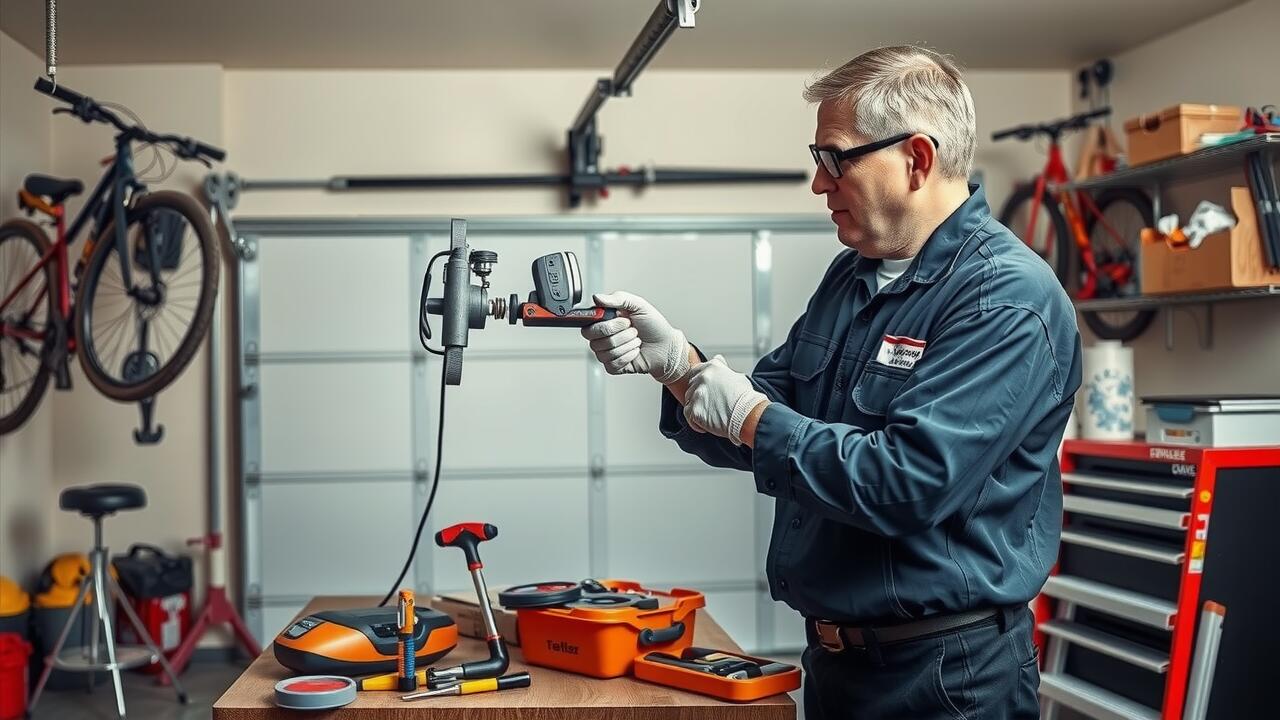Inspecting Wiring and Connections
Start by visually inspecting the wiring and connections leading to the garage door sensors. Look for any signs of wear, fraying, or damage that could be disrupting the sensor’s functionality. Ensure that all screws and connectors are tight, as loose connections can easily lead to performance issues. If necessary, gently tug on the wires to check for any hidden breaks that may not be immediately visible.
Next, check for any environmental factors that could impact the connections. Moisture can corrode metal connectors, while pests may chew through wiring. If you find deteriorated components, consider conducting a thorough assessment to determine whether a specific section needs repair or replacement. For those needing assistance, seeking professional help for Garage Door Sensor Repair & Replacement in Fort Saskatchewan, Alberta, can ensure that all connections are restored to optimal condition.
Common Wiring Issues to Look For
When inspecting the wiring connected to your garage door sensors, start by looking for any visible damage. Frayed or broken wires can interfere with the signals between the sensors and the opener. Check for loose connections, as these can cause intermittent issues that prevent the door from responding properly. Ensuring that all connections are secure is crucial for optimal performance.
Another common problem is interference caused by environmental factors. Water damage can seep into exposed wiring, especially in regions with fluctuating weather conditions like Fort Saskatchewan, Alberta. Additionally, rodents may chew through cables, resulting in malfunctioning sensors. Keeping a detailed eye on these potential issues can help simplify the process of Garage Door Sensor Repair & Replacement in Fort Saskatchewan, Alberta.
Testing Sensor Functionality
Testing the functionality of your garage door sensors is an essential step in troubleshooting issues. Start by examining the sensor alignment. The sensors should face each other directly, ensuring that there’s no obstruction in their line of sight. Use a simple object, like a broomstick, to block the sensor path, which will help determine if the sensors are detecting obstructions properly. If the garage door stops as it should when the sensor is obstructed, the sensors are likely functioning correctly.
If the sensors still show issues despite proper alignment, further tests are necessary. Most garage door openers have indicator lights on the sensors that signal their status. A blinking light typically indicates a malfunction, while a steady light suggests normal operation. For those in need of more extensive repairs, consider seeking professional help for Garage Door Sensor Repair & Replacement in Fort Saskatchewan, Alberta. They can provide the expertise necessary to diagnose and resolve any persistent problems with your garage door sensors.
How to Perform a Simple Test
To perform a simple test on your garage door sensors, begin by ensuring that the sensors are clean and free of any obstructions. Dirt, debris, or spider webs can interfere with their functionality. Once the area is clean, check if the sensor lights are lit. Typically, a solid light indicates that the sensors are aligned correctly, while a blinking light may signal an alignment issue.
Next, manually block one of the sensors while attempting to close the garage door. If the door reverses or stops, the sensors are functioning properly. If not, it may indicate a problem that requires further inspection or replacement. For those in need of professional assistance, Garage Door Sensor Repair & Replacement in Fort Saskatchewan, Alberta, offers expert services to resolve any sensor-related issues.
Replacing Faulty Sensors
When it becomes clear that the sensors are faulty, replacing them is a necessary step to restore your garage door’s functionality. Begin by identifying the right replacement parts. Most garage door sensors are designed to be compatible with specific brands and models. It’s important to have the model number of your garage door opener on hand to ensure you acquire the correct sensors. Visiting a local hardware store or online retailer can provide access to various options tailored for your needs.
After obtaining the new sensors, the installation process is relatively straightforward. Disconnect the power to the garage door system before you begin to ensure safety. Remove the old sensors by unscrewing them from their mounts, disconnect their wiring, and then attach the new sensors in the same locations. Once secured and connected, restore power to the system. For those dealing with more complex installations or troubleshooting, professional assistance may be beneficial. Consider relying on services that specialize in Garage Door Sensor Repair & Replacement in Fort Saskatchewan, Alberta to ensure a proper installation.
Choosing the Right Replacement Parts
When selecting replacement parts for your garage door sensors, it’s essential to ensure compatibility with your existing system. Check the specifications of your current sensors, as variations in model numbers and brands can affect functionality. Most manufacturers provide detailed information about recommended replacement parts, which can help guide your choice. Some local hardware stores in Fort Saskatchewan may also have knowledgeable staff to assist in identifying the correct components for your needs.
Prioritising quality over cost can save you from future issues. Opting for OEM (original equipment manufacturer) parts ensures optimal performance and longevity. While aftermarket options might be cheaper, they may not deliver the same reliability. It is advisable to consult with professional services like Garage Door Sensor Repair & Replacement in Fort Saskatchewan, Alberta, if you are uncertain about which parts to purchase. Their expertise can help prevent further complications and ensure a smooth installation process.
FAQS
What are the common signs that my garage door sensor is not working?
Common signs include the garage door not closing, flashing lights on the opener, or the door reversing immediately after touching the ground.
How can I tell if the wiring is the issue with my garage door sensor?
Look for visible damage such as frayed wires or loose connections. You can also use a multimeter to check for continuity in the wires.
What type of replacement sensors should I look for?
Ensure you choose sensors that are compatible with your garage door opener model. Check the manufacturer’s specifications or consult with a professional if unsure.
Is it safe to attempt fixing a garage door sensor on my own?
Yes, as long as you take proper safety precautions. Make sure the garage door is disconnected from the power supply and follow the instructions carefully. If you’re uncertain, it’s best to consult a professional.
How often should I check my garage door sensors?
It’s good practice to inspect your garage door sensors every few months as part of regular maintenance to ensure they are functioning properly.

